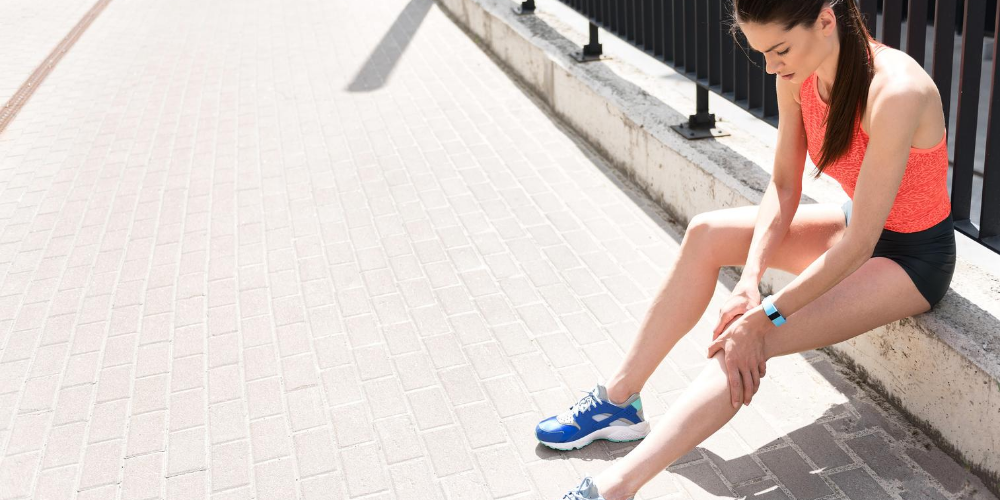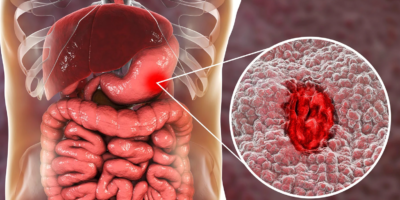If you’re a woman, chances are fifty-fifty that you’ve had at least one episode of cystitis, better known as a bladder infection. Urinary tract infections, or UTIs (infection anywhere along with the urinary system from the kidney to the urethra), are the most common bacterial infections in women. Within the category of UTIs, bladder infections top the list—so much so that people use UTI and bladder infection interchangeably. The reason such infections are predominantly a female affliction has to do with relative shortness of the urethra (the tube that transports fluids from the kidneys to the genitals for removal). Bowel bacteria such as E. coli, the usual cause of UTIs, simply don’t need to travel far to reach the bladder. And bacteria are the most common cause of acute bladder infections. Classic symptoms include burning with urination, increased frequency of urination, an urgent need to urinate (even if the bladder isn’t very full), nighttime urination, and discomfort above the pubic bone. The urine may be cloudy and foul-smelling.


1. Cranberry Mocktail
How it works: Research studies show that cranberry juice and concentrated cranberry tablets reduce UTI recurrences. Also, the tannins that create the characteristic mouth-puckering effect of cranberries are also astringent in the urinary system. (Astringents tighten tissues and are thought to reduce surface irritation and inflammation. Cranberry is acidic, but it takes a lot of volumes to acidify the urine enough to kill bacteria.)
- PREPARATION:
- 1 cup (235 ml) unsweetened cranberry juice
- ¾ cup (175 ml) carbonated (sparkling) water
- 2 lemon slices
- 2 teaspoons (14 g) honey
- DIRECTIONS: Mix together all the ingredients. Aim to drink both servings of this cocktail in one day.
- YIELD: 02 SERVINGS
- RECIPE VARIATION: Substitute apple juice or sparkling cider for the carbonated water and omit the honey.
NOTE: The daily volume of cranberry juice used in studies ranges from 2 tablespoons (30 ml) to 1 cup (235 ml) of pure cranberry juice. Higher doses can loosen stools. If you find you can’t stomach cranberry juice, try taking concentrated cranberry in capsule form as directed on the label. Be aware that commercially prepared cranberry juice drinks contain added water and sugar.
Do not combine cranberry with the blood-thinning medication warfarin (Coumadin) without first discussing it with your doctor. Case reports suggest cranberry may augment the effect of Coumadin, further reducing the ability of blood to clot. However, the problem has not been detected in clinical trials.
2. Beneficial Blueberry
How it works: Blueberries belong to the same plant family as cranberries. They, too, contain flavonoids that inhibit the adhesion of bacteria to bodily surfaces. The yogurt contains beneficial bacteria (probiotics) that can help restore normal bowel bacteria if you’ve taken antibiotics to treat a UTI. However, the research is inconclusive as to whether probiotics (taken by mouth or used intravaginally) help prevent recurrent cystitis.
- PREPARATION:
- 1 cup (230 g) plain yogurt
- ½ cup (75 g) blueberries
- ½ cup (120 ml) “crabapple” juice (cranberry juice and apple juice combined)
- DIRECTIONS: Mix all the ingredients in a blender. Enjoy.
- YIELD: 01 SERVINGS
3. Honeyed Garlic Tea
How it works: Garlic is active against E. coli and other bacteria that can cause UTIs.
- PREPARATION:
- 2 cups (475 ml) water
- 4 garlic cloves
- 1 to 2 teaspoons (7 to 14 g) honey
- DIRECTIONS: Bring the water to a boil in a saucepan. Crush the garlic cloves and put them in a mug (consider placing the crushed garlic inside a muslin bag or mesh tea ball). Pour the boiled water over the garlic. Cover the mug with a saucer. Let it steep for 10 to 15 minutes. Remove the garlic, add the honey, and drink.
- YIELD: 01 SERVINGS
4. Nutrient-Rich Dandelion Tea
How it works: Dandelion is nutrient-rich and gently increases urine output. You can also enjoy the tender greens in salads, steamed, or sautéed. Peppermint is antispasmodic and also tastes pleasant.
- PREPARATION:
- 1 quart (946 ml) water
- 3 tablespoons (4.5 g) dried, chopped dandelion leaves
- 1 teaspoon (0.5 g) chopped dried peppermint leaves, or 2 teaspoons (4 g) fresh, chopped
- Honey, as needed
- DIRECTIONS: Bring the water to a boil in a saucepan. Turn off the heat and add the dandelion and peppermint. Cover and steep for 20 minutes. Strain. Sweeten with honey to taste. Drink throughout the day.
- YIELD: 04 SERVINGS
5. Yogurt-Berry Ice
How it works: Antibiotics effectively treat UTIs. However, they also kill some of the normal, friendly bacteria in the bowel. Probiotics, taken in supplement form, help recolonize normal bacteria and prevent side effects such as diarrhea. Yogurt and other fermented foods, which contain beneficial bacteria, may also help.
- PREPARATION:
- 2 cups (about 200 g) frozen mixed berries, or ²∕3 bags (16-ounces, or 455 g)
- ½ cup (115 g) plain yogurt
- 3 tablespoons (60 g) honey
- ¹∕8 teaspoons almond extract
- DIRECTIONS: Allow the berries to thaw for 7 to 10 minutes. Pour into a blender or processor and grind until the fruit pieces look like shaved ice. While the blender is running, add the yogurt, honey, and almond extract. Continue blending until the mixture is creamy. Eat immediately, as the texture will change when refrozen.
- RECIPE VARIATION: For drinkable smoothies, add ½ cup (120 ml) of almond milk.
- YIELD: 04 SERVINGS
6. Nutrient-Rich Dandelion Tea
How it works: Dandelion is nutrient-rich and gently increases urine output. You can also enjoy the tender greens in salads, steamed, or sautéed. Peppermint is antispasmodic and also tastes pleasant.
- PREPARATION:
- 1 quart (946 ml) water
- 3 tablespoons (4.5 g) dried, chopped dandelion leaves
- 1 teaspoon (0.5 g) chopped dried peppermint leaves, or 2 teaspoons (4 g) fresh, chopped
- Honey, as needed
- DIRECTIONS: Bring the water to a boil in a saucepan. Turn off the heat and add the dandelion and peppermint. Cover and steep for 20 minutes. Strain. Sweeten with honey to taste. Drink throughout the day.
- YIELD: 04 SERVINGS
7. Soothing Sitz Bath
How it works: The warmth of the water with the soothing ingredients helps relax the urethra. Baking soda and salt can soothe irritated membranes. Oatmeal has anti-inflammatory properties and promotes wound healing. Vinegar, which you can also add, is mildly acidic and helps relieve irritation of the vagina and urethra.
- PREPARATION: 2 to 3 cups (576 to 864 g) salt(442 to 663 g), baking soda, or (160 to 240 g)colloidal oatmeal
- DIRECTIONS: Fill your bathtub with water as warm as you can stand it. Pour in the salt, baking soda, or oatmeal and disperse. Soak for at least 30 minutes.
- YIELD: 01 APPLICATION
- RECIPE VARIATION: You can also use 2 to 3 cups (475 to 700 ml) of vinegar but don’t combine it with baking soda, or you’ll have a fizzy reaction.
NOTE: Clean your feet before sitting in the tub so you do not introduce new bacteria. Encourage children who have trouble urinating because of pain to go ahead and squat in the water and let it go. Then have them step out of the tub immediately.
Fact or Myth?
- YOUR CHOICE OF UNDERWEAR CAN MAKE A DIFFERENCE. Fact. Keep your genital area dry by wearing cotton underpants. Nylon traps moisture in that dark area, promoting bacterial growth. The situation can be even worse if you wear tight jeans.
Lifestyle Tip
- Use warmth. fill a hot water bottle or turn on a heating pad and place it over your lower abdomen. heat improves blood flow, relaxes muscles, and helps relieve discomfort from a bladder infection.
- Try employing essential oils for relief from UTIs. massage a couple of drops of lavender essential oil into the skin above the pubic bone and then apply warmth to help relieve any discomfort.
When to call the Doctor
Call during office hours if:
- Your symptoms are consistent with a bladder infection.
- Antibiotics haven’t brought relief after twenty-four hours.
Seek urgent medical care if:
- You’re pregnant and think you have a UTI.
- You have blood in your urine.
- You develop additional symptoms, such as flank pain, fever, chills, nausea, and vomiting.
- You have diabetes or an immune deficiency syndrome (e.g., AIDS) with new signs of a UTI.






Leave a Reply